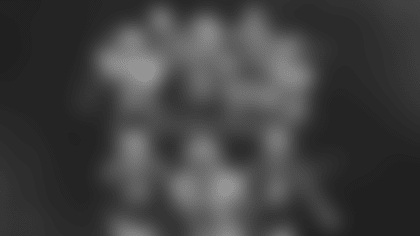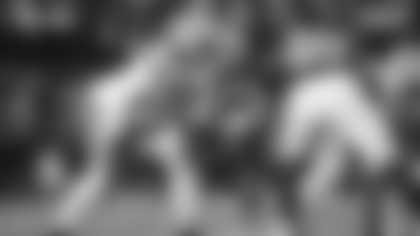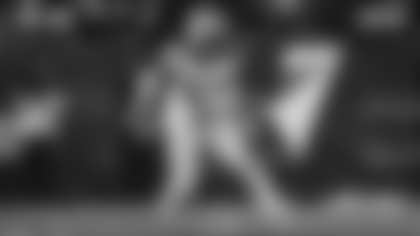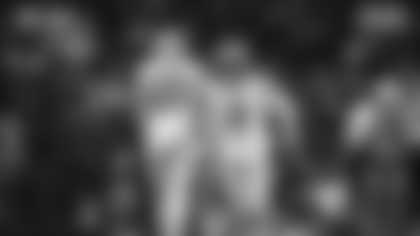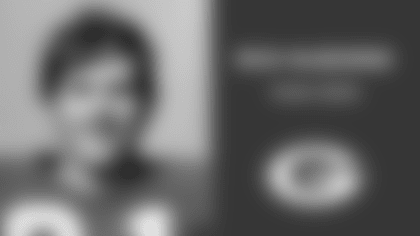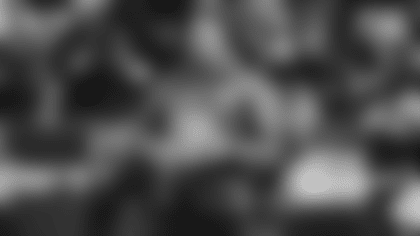*Cliff Christl started gathering oral histories with former Packers and others associated with the team more than 20 years ago and will continue to gather them as Packers historian. Excerpts from those interviews will be periodically posted at **www.packers.com*
Paul Mazzoleni was water boy for the Packers in 1921, their first season in what is now the NFL, and attended the first Packers-Bears game played in Green Bay in 1923. A native of St. Louis, Mo., Mazzoleni moved with his family to Green Bay in 1921 when he was 8 years old. After serving in World War II, Mazzoleni opened a service station on South Broadway Street in Green Bay in 1949 and operated it until his retirement in 1987. It was a popular gathering place for many Packers players and coaches over the years, and Vince Lombardi was among Mazzoleni's many good friends inside the organization. A nearly lifelong Packers fan, Mazzoleni was a Packers FAN Hall of Fame inductee in 2002. He died in 2005 at age 91.
On the atmosphere in Green Bay before Packers-Bears games played at old City Stadium (1925-56): "That was a big thing. That's all you talked about: 'Bear week. Bear week.' That's all you'd do was talk Bears. The police department even relaxed the laws for the taverns. Remember Three Corners? There was nothing but taverns over there and they'd let 'em open at 7 o'clock in the morning. There were people going to the game who were getting oiled up already at 7 o'clock. You had a lot of football cowboys in those days."
On the atmosphere at the Hotel Northland, where the Bears and other visiting teams stayed and also a popular hangout for fans during Packers-Bears weekends: "On Sunday morning the gathering place of all the Packers fans was the Northland Hotel. You could see all the players. I can remember shaking hands with Sid Luckman… Johnny Lujack and a lot of those players went to mass at St. Willebrord Church. We'd all wait there and try to get autographs. At the Northland, sometimes you couldn't even get in the lobby. It was just full of fans."
On the Bears riding buses from the Northland to old City Stadium, roughly a mile away:"We used to wait for their bus over on Walnut Street. We'd yell, 'Go back to Chicago, you bunch of bums.' A lot of people who had their houses there knew the bus was coming by and they'd holler at 'em. And there were hardly any cars in those days. Fans on the west side would walk to old City Stadium. Those fans also were part of the crowd that was jeering them. They were our rivals. They were our enemies."
On the battles between Curly Lambeau, coach of the Packers for 29 years, and George Halas, coach of the Bears for 40 years:"(Halas) was always marching up and down the sideline, hollering at the referees. So did Lambeau. The greatest show was watching (Halas) and Lambeau going at it, arguing. In those days, the coaches could step out on the field and there wouldn't be a penalty."
On Halas meeting Packers co-founder George Whitney Calhoun at Brehme's Bar on W. Walnut St., on Saturday nights before Packers-Bears games in Green Bay:"George Calhoun and Halas would meet there for their roasted chicken. That was an old fire department building. The Northwest Engineering guys would go over during the week. He had famous fish fries. And he had genuine roasted chicken. Wonderful food. It was over by the railroad tracks."
On Halas, both a friend and foe of the Packers:"He was a gentleman, but he was a dog during the game. The fans knew he was a showman and they knew he was great for the Packers, but when it came time for a Packer-Bear game all those things went by the wayside."
On football's popularity in Green Bay and what led to the interest in the Packers-Bears rivalry and allowed the Packers to survive:"You know what made football in Green Bay? The two high schools: East and West. Those were grudge battles and I mean grudge battles. That put a lot of intensity into football in Green Bay. You see who ran the town at that time was Andy Turnbull (one of the owners of the Green Bay Press-Gazette) and the Washington Street businessmen. If it wasn't for the East Side businessmen, we wouldn't have football here today. They kept it alive, no question about that."
On the celebration at the Chicago & North Western depot when an estimated 20,000 fans greeted the Packers upon their return from Chicago after they had won their first NFL title in 1929:"Tubby Bero, chief of police (and one of the original Packers), allowed the bars to stay open all night. It was no holds barred. I remember being a part of it. You couldn't get close to the railroad station. You were just part of the mob."
On the game-day atmosphere at Green Bay's old City Stadium: "I can remember the food. You could smell the hamburgers. They cooked 'em the right way with onions and you could smell it two blocks away. There were no toilet facilities. At halftime, the guys would pee on the fence. The women would go under the stands."
On riding the Sunday trains to and from Chicago for games at Wrigley Field and partying in the baggage cars that were converted into bar cars:"It was just a wonderful time. We'd start out at the Chicago & North Western railroad. We'd fill up six or seven cars and there was one car just for drinking. It was a bar car. Mostly beer and solid whiskey. They didn't have these fancy highballs. The liquor was flowing like rain. A lot of times (some fans) would never get to the game."
On a 1932 confrontation between Bears center George "Brute" Trafton and Packers fullback Clarke Hinkle, both future Pro Football Hall of Famers:"Clarke Hinkle was getting ready to kick off. They didn't have a tee in those days. They just made a hole in the ground. So the fans are all standing up waiting for the kickoff and here comes Trafton. He tumbles the ball out of the hole. Holy cripes! Lambeau came out on the field. Halas came out on the field. I happened to be selling programs that day and they are shaking fists at each other. Swearing. Fans wanted to get on the field. It was a good thing we had police protection. The fans were really aroused."
On Trafton, who played for the Bears from 1920-32: "Oh, he was a dirty player. The fans booed him terrible. If you had to make an analogy, he was a guy like this Dennis Rodman. He knew how to get people excited. He was always ready to scrap: just like Rodman. He'd hold onto a guy and then walk away. He was like a showman."
On a violent 1933 collision between Bears legend Bronko Nagurski and Hinkle, both of whom doubled as fullbacks and linebackers:"Both guys were going full force. It was like two engines hitting head on. That was one of the greatest collisions you'll ever see. They both went down. Nagurski was completely flattened out. His nose was broken. There was blood all over his face. Hinkle was lying on the ground. Neither player finished the game. It was the talk of the town for years."
On a later collision between the two in a game at Wrigley Field:"Hinkle was coming through the line and he gets to about the 20-yard line. Who is the only guy in front of him? Nagurski. Hinkle steamrolled him. This is no fooling. Hinkle staggered the last six yards. I don't know how he ever made it to the goal line."
On end Bill Hewitt, another Pro Football Hall of Famer who played for the Bears from 1932-36:"He was another villain, but not as noticeable. Hewitt had a lot of natural ability. He was a good defensive end. But he wasn't mean like Trafton. He was a good ballplayer. He had a lot of stamina."
On Bobby Cahn, who stood a mere 5-1 and refereed nearly 20 Packers-Bears games from 1921-42: "He was loved by the people. The fans respected him. He did a hell of a job for one guy to control all those maniacs."
On Lee Artoe, who played tackle for the Bears from 1940-42 and 1945-48 and was regarded by some Packers as the dirtiest of all the Bears: "I had a service station on Broadway and a lot of the guys used to stop there. (Packers fullback) Ted Fritsch used to stop in. A bunch of us are standing around one day and we're talking about dirty players. Fritsch says, 'What goes on in that pile-up, you'll never believe. They twisted your leg. They tried to gouge your eyes out. They pulled on your ears.' He said, 'If you don't want to believe it,' then he pulled his pants down and said, 'If you want to know about a dirty player. That (blank) Artoe. I've still got the teeth marks in my (butt). '"
On the welcome home celebrations for the Packers at the local railroad stations when they'd return from Chicago during the lean years following World War II: "There was a fella by the name of Russ Leddy, who managed the Orpheum Theater. He was a rabid Packer fan. He would call the radio stations and say, 'The Packers are in Milwaukee now. They are as far as Oshkosh.' Everybody had a radio going at that time and what that meant was: 'Don't forget now, be at the North Western (or Milwaukee Road) station in half-an-hour.' And there'd be 2,000 people there; always for the Bear game."
The excerpts above were taken from two interviews conducted with Mazzoleni in 1997, and another in 2001. Some of the material in the interviews was included in "Mudbaths & Bloodbaths: The Inside Story of the Bears-Packers Rivalry," written by Gary D'Amato and Cliff Christl and first published in 1997.
- *




